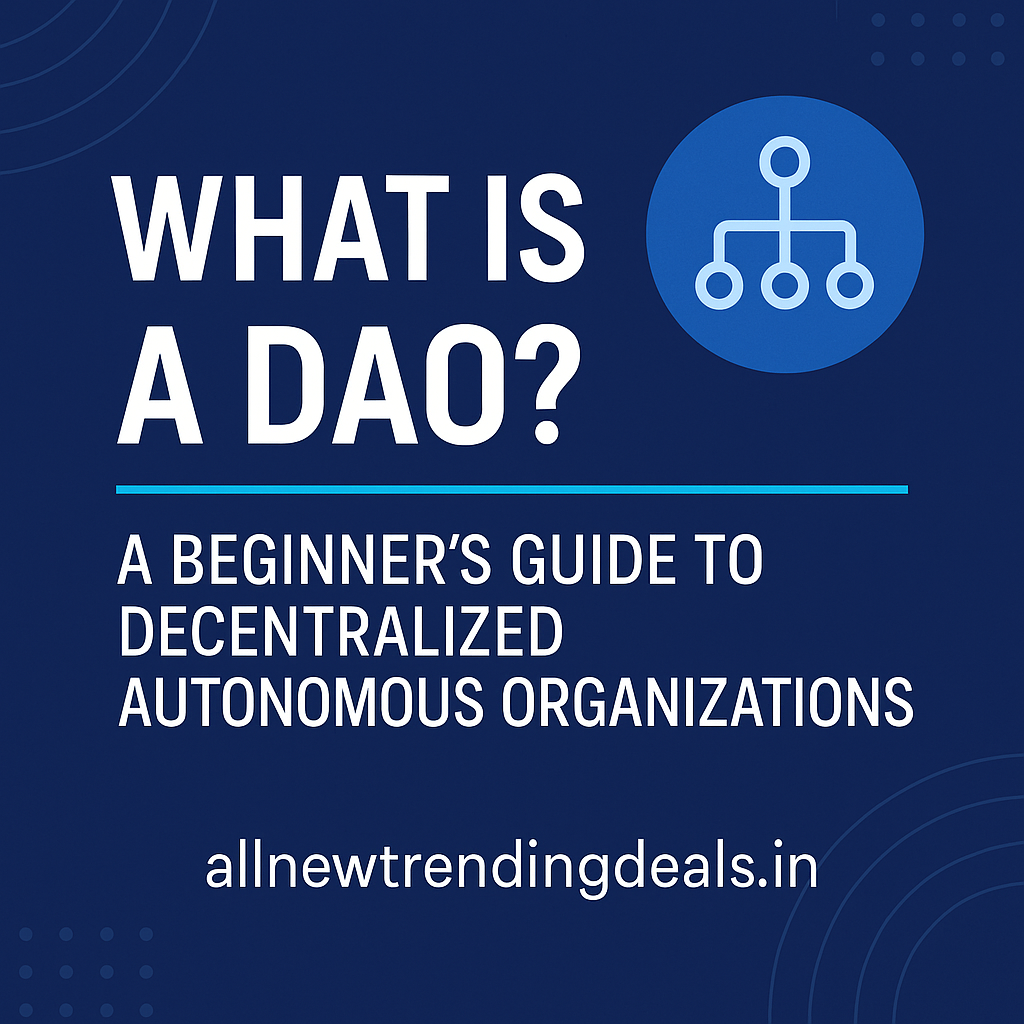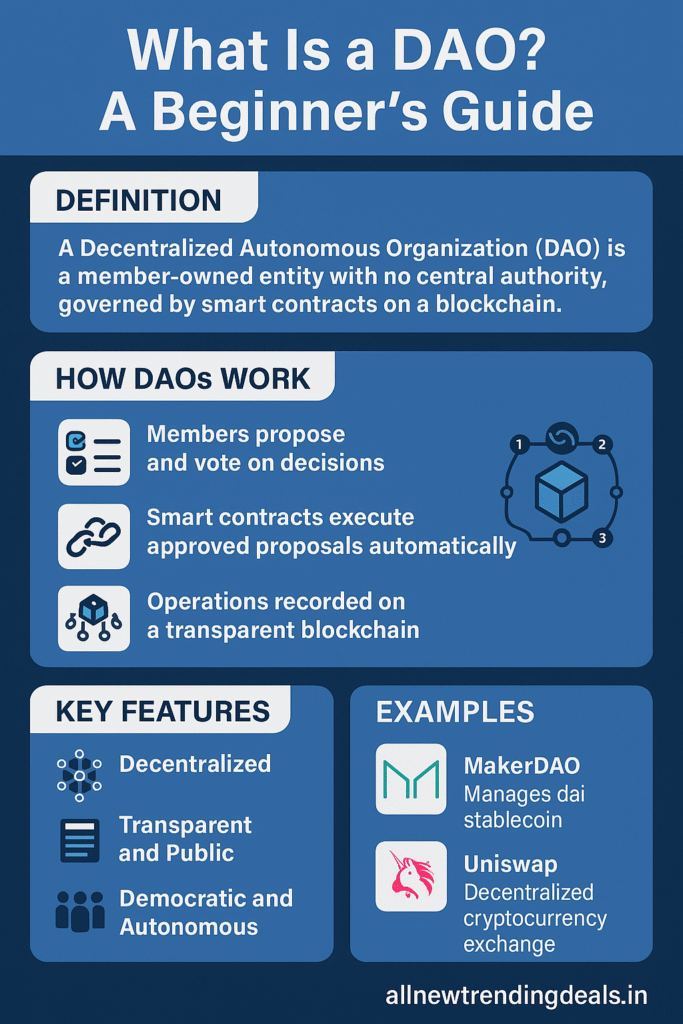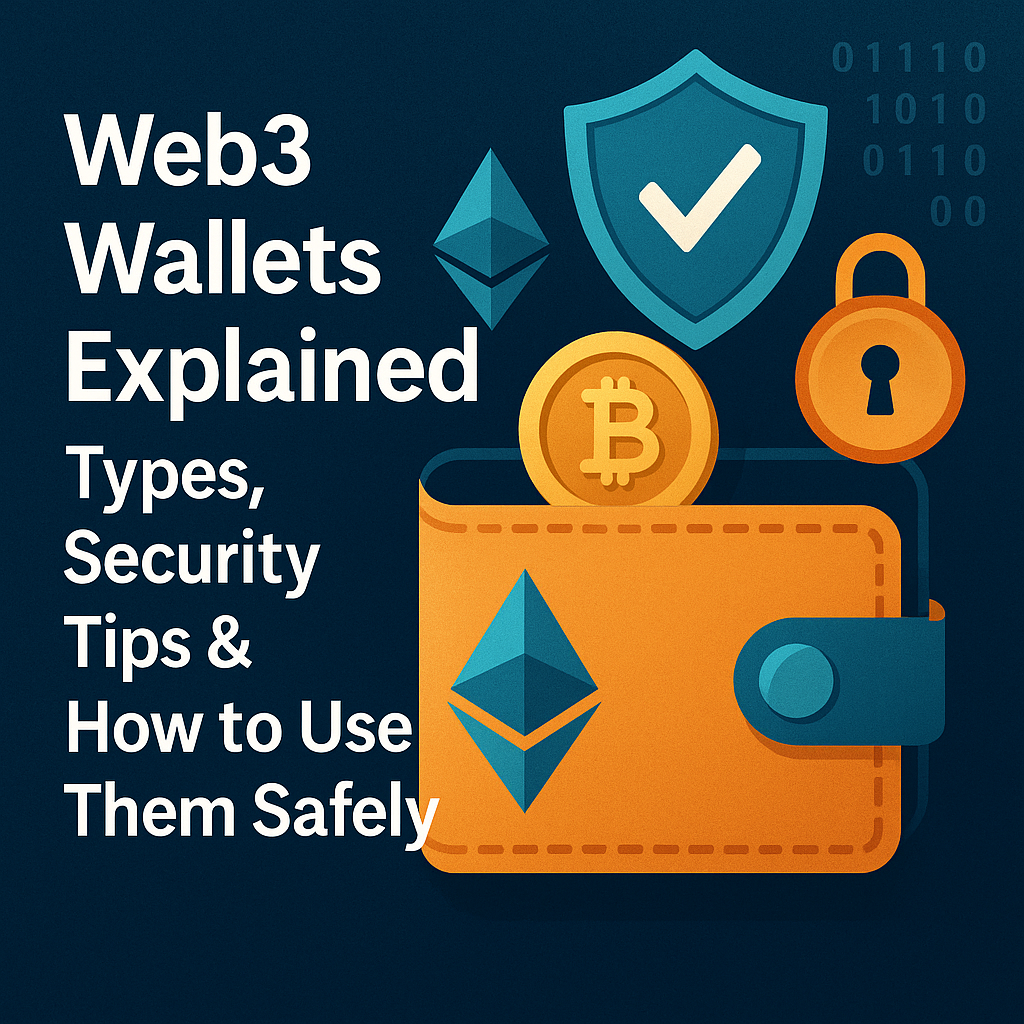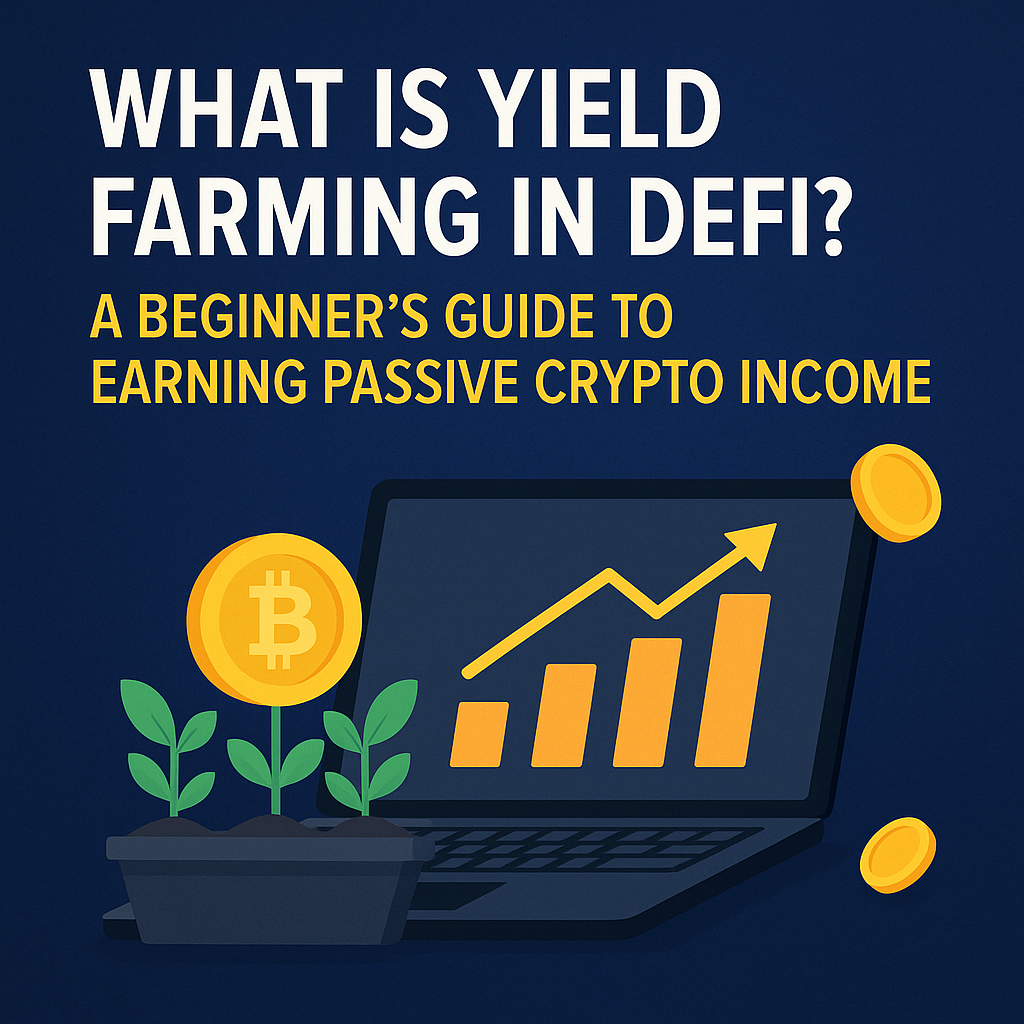
“A DAO is a company without a boss — just code, community, and consensus.”
Imagine a company that runs without CEOs, managers, or a central office — where decisions are made by the people, for the people. No hierarchy, no paperwork — just smart contracts and blockchain voting.
Welcome to the world of DAOs — Decentralized Autonomous Organizations. These organizations are changing how people collaborate, fund ideas, and make group decisions online.
Let’s dive into what DAOs are, how they work, why they matter, and how you can participate safely.
📌 Table of Contents
- What Is a DAO?
- How DAOs Work (Simple Explanation)
- Real-World Examples of DAOs
- DAO vs Traditional Organizations: Comparison Table
- Benefits of DAOs
- Case Study: MakerDAO and DAI
- How to Join or Start a DAO
- Risks & Challenges in DAOs
- Web3 Tools for DAOs
- Final Thoughts + Trusted Resources
1. 🧠 What Is a DAO?

A DAO (Decentralized Autonomous Organization) is an online community with a shared bank account and no central leadership. Instead of managers or board members, decisions are made through votes by token holders.
Everything is governed by smart contracts, which are self-executing pieces of code stored on a blockchain.
💬 “DAOs are internet-native organizations governed by rules written in code.” – Vitalik Buterin
2. ⚙️ How DAOs Work (In Simple Terms)
Here’s a step-by-step example:
- A DAO is launched on a blockchain (usually Ethereum)
- Community members receive or buy tokens
- Anyone with tokens can propose changes or decisions
- Others vote using their tokens
- If a proposal gets enough votes, it’s automatically executed via smart contract
No CEO, no emails, no Zoom meetings — just code and community.
3. 🛠️ Real Examples of DAOs
| DAO Name | Purpose | Token |
|---|---|---|
| MakerDAO | Manages stablecoin DAI | MKR |
| Uniswap DAO | Governs Uniswap protocol | UNI |
| Aave DAO | Controls lending platform Aave | AAVE |
| ENS DAO | Manages .eth domain system | ENS |
| Friends With Benefits (FWB) | Community DAO for creatives | FWB |
These DAOs manage billions of dollars in treasury, run entirely by their communities.
4. 🧾 DAO vs Traditional Organizations: Comparison
| Feature | Traditional Org | DAO |
|---|---|---|
| Leadership | CEO, Board of Directors | No central authority |
| Voting | Closed, top-down | Open, token-based voting |
| Transparency | Internal (often hidden) | On-chain, public for all |
| Speed of Execution | Slow, manual | Fast, automated via smart contracts |
| Global Participation | Limited by geography | Anyone with internet can join |
5. ✅ Benefits of DAOs
| Benefit | Why It Matters |
|---|---|
| 🌐 Global Participation | No borders or red tape |
| 📜 Transparency | All actions are on-chain and public |
| 👥 Community Ownership | Members shape the future, not managers |
| ⚡ Speed and Efficiency | Proposals executed without delay |
| 🧠 Collective Wisdom | Better decision-making through crowdsourcing |
6. 📚 Case Study: MakerDAO & DAI
MakerDAO is one of the earliest and most successful DAOs. It governs the DAI stablecoin — a crypto asset that maintains a stable value of ~$1 USD.
- Users deposit collateral (like ETH) into MakerDAO’s vault
- DAI is minted based on that collateral
- MKR token holders govern how DAI works (risk rules, interest rates, etc.)
💡 As of 2024, MakerDAO has over $5 billion in assets under management — all handled without a traditional company structure.
7. 🚪 How to Join or Start a DAO
✅ To Join:
- Pick a DAO – Use tools like DAOlist or DeepDAO
- Get tokens – Buy or earn governance tokens
- Participate – Vote, join discussions, submit proposals
🚀 To Start:
No need for lawyers or banks — just a wallet and a vision.
8. ⚠️ Risks and Challenges
| Risk | Description |
|---|---|
| 🪲 Smart Contract Bugs | Vulnerabilities in code can be exploited |
| 🧠 Voter Apathy | Few members actively vote in many DAOs |
| 🧑💻 Centralized Devs | Founders often hold large token supply |
| ⚖️ Regulatory Unknowns | Legal status of DAOs is unclear in many countries |
| 💬 Governance Conflicts | Disagreements can slow progress |
💡 Choose DAOs with strong communities, open communication, and secure contracts.
9. 🧰 Web3 Tools for DAOs
| Tool | Purpose | Website |
|---|---|---|
| Snapshot | Off-chain voting system | snapshot.org |
| Gnosis Safe | Treasury management | gnosis-safe.io |
| Tally | Proposal management | tally.xyz |
| Coordinape | Contributor rewards | coordinape.com |
🔚 Final Thoughts
DAOs are one of the most exciting and disruptive ideas to emerge from Web3. They represent the future of internet communities, startups, and even governments.
💬 “In the future, every community, company, and cause could have its own DAO.”
While they’re still evolving, DAOs offer a glimpse into a world where collaboration is decentralized, transparent, and community-driven.

